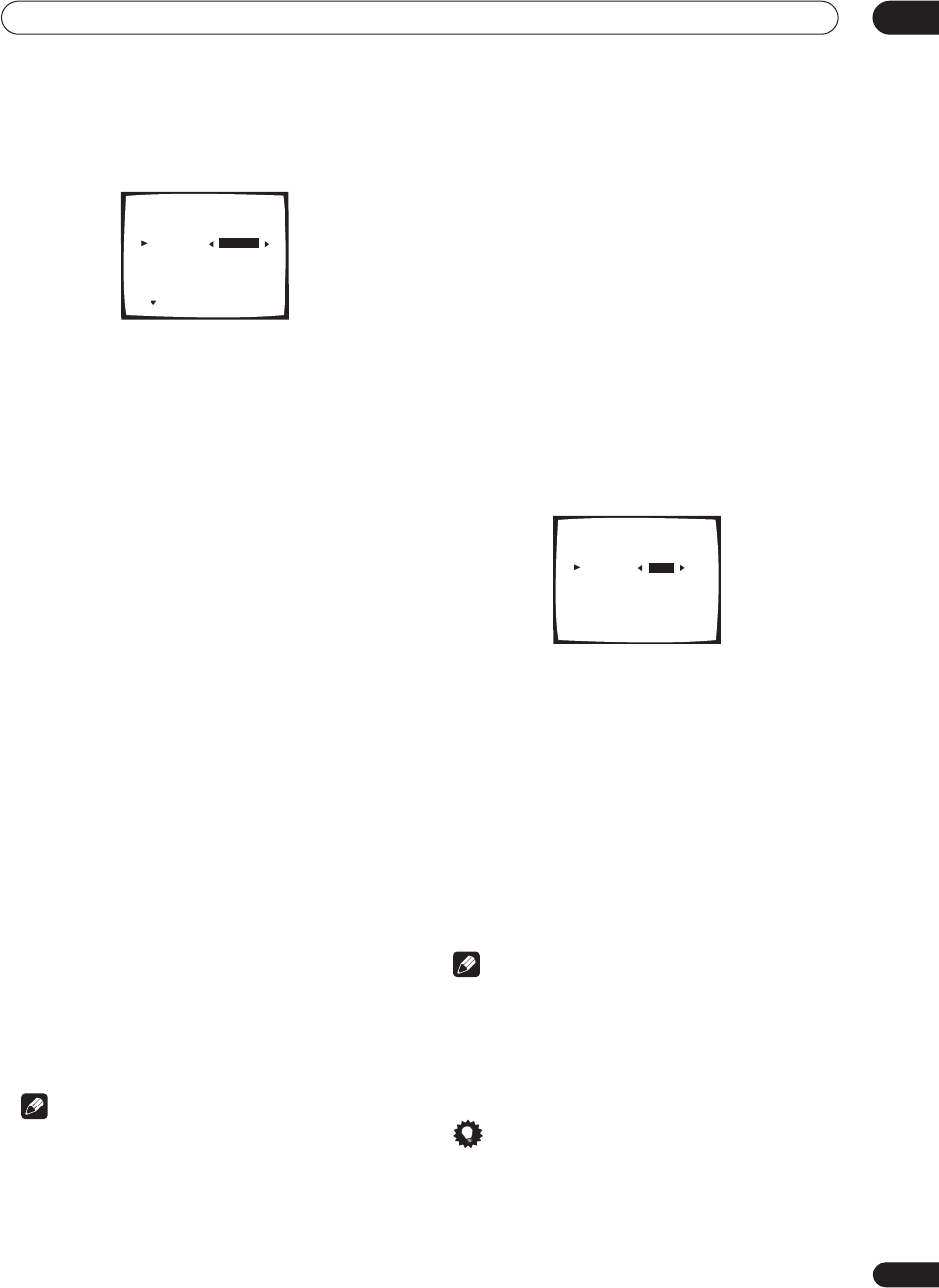
The Surround Setup menu
07
59
En
5 Choose the set of speakers that you want to set
then select a speaker size.
Use / (cursor left/right) to select the size (and
number) of each of the following speakers:
• FRONT – Select LARGE if your front speakers
reproduce bass frequencies effectively, or if you
didn’t connect a subwoofer. Select SMALL to send
the bass frequencies to the subwoofer.
• CENTER – Select LARGE if your center speaker
reproduces bass frequencies effectively, or select
SMALL to send bass frequencies to the other
speakers or subwoofer. If you didn’t connect a center
speaker, choose NO (the center channel is sent to
the front speakers).
• SURROUND – Select LARGE if your surround
speakers reproduce bass frequencies effectively.
Select SMALL to send bass frequencies to the other
speakers or subwoofer. If you didn’t connect
surround speakers choose NO (the sound of the
surround channels is sent to the front speakers or a
subwoofer).
• SURR BACK – Select the number of surround back
speakers you have (one, two or none). Select LARGE
if your surround back speakers reproduce bass
frequencies effectively. Select SMALL to send bass
frequencies to the other speakers or subwoofer. If
you didn’t connect surround back speakers choose
NO.
• SUBWOOFER – LFE signals and bass frequencies of
channels set to SMALL are output from the
subwoofer when YES is selected (see notes below).
Choose the PLUS setting if you want the subwoofer to
output bass sound continuously or you want deeper
bass (the bass frequencies that would normally come
out the front and center speakers are also routed to
the subwoofer). If you did not connect a subwoofer
choose NO (the bass frequencies are output from
other speakers).
Note
• If you selected Manual THX (in step 2) you can only
adjust the surround back settings.
• If you selected Front Bi-Amp (in step 3) you can’t
adjust the surround back settings.
• If you select SMALL for the front speakers the
subwoofer will automatically be fixed to YES. Also,
the center and surround speakers can’t be set to
LARGE if the front speakers are set to SMALL. In this
case, all bass frequencies are sent to the subwoofer.
• If the surround speakers are set to NO, the surround
back speakers will automatically be set to NO.
• If you select one surround back speaker only, make
sure that speaker is hooked up to the left surround
back terminal.
6 Press ENTER to go to the next screen.
7 Choose a crossover frequency.
This setting decides the cutoff between bass sounds
playing back from the speakers selected as LARGE, or
the subwoofer, and bass sounds playing back from those
selected as SMALL. It also decides where the cutoff will
be for bass sounds in the LFE channel.
Use / (cursor left/right) to select the crossover
frequency:
• 50Hz – Sends bass frequencies below 50 Hz to the
subwoofer (or LARGE speakers).
• 80Hz – Sends bass frequencies below 80 Hz to the
subwoofer (or LARGE speakers).
• 100Hz – Sends bass frequencies below 100 Hz to the
subwoofer (or LARGE speakers).
• 150Hz – Sends bass frequencies below 150 Hz to the
subwoofer (or LARGE speakers).
• 200Hz – Sends bass frequencies below 200 Hz to the
subwoofer (or LARGE speakers).
Note
• If you selected Manual THX (in step 2) the crossover
frequency is set to 80Hz and this screen doesn’t
appear.
8 Select ‘Return’ and press ENTER to return to the
Surround Setup menu.
Tip
• If you have a subwoofer and like lots of bass, it may
seem logical to select LARGE for your front speakers
and PLUS for the subwoofer. This may not, however,
yield the best bass results. Depending on the speaker
placement of your room you may actually experience
2.1. Speaker Systems
Manual Free
” Normal Surround ”
FRONT [ LARGE ]
CENTER [ LARGE ]
SURROUND [ LARGE ]
SURR BACK [LARGE
X
2]
SUB WOOFER [ YES ]
( NEXT)
2.1. Speaker Systems
Manual Free
” Normal Surround ”
Crossover [ 80Hz ]
Normal Surround
(THX Speaker = 80Hz)
SP-B : Second Zone
[Return]


















